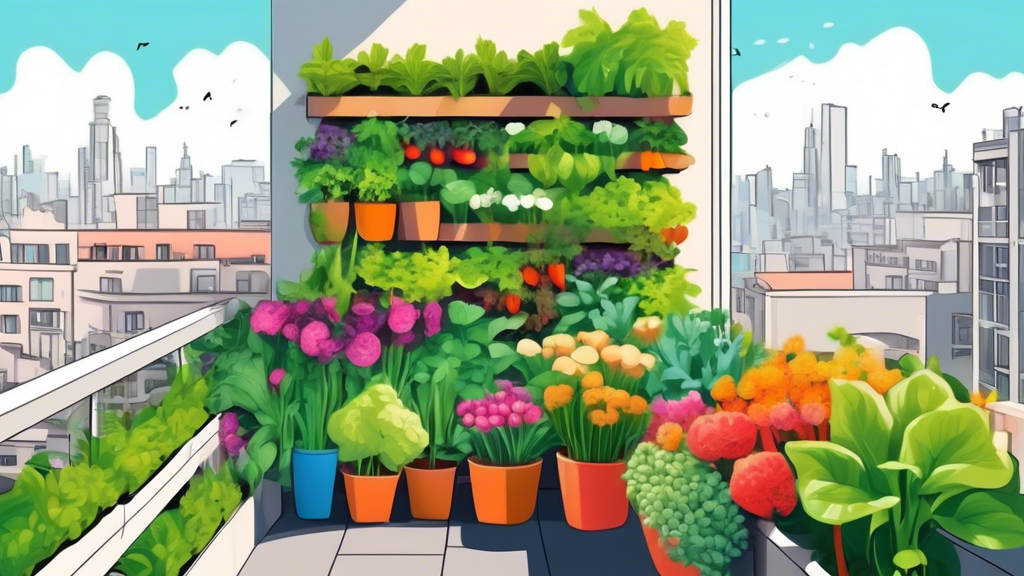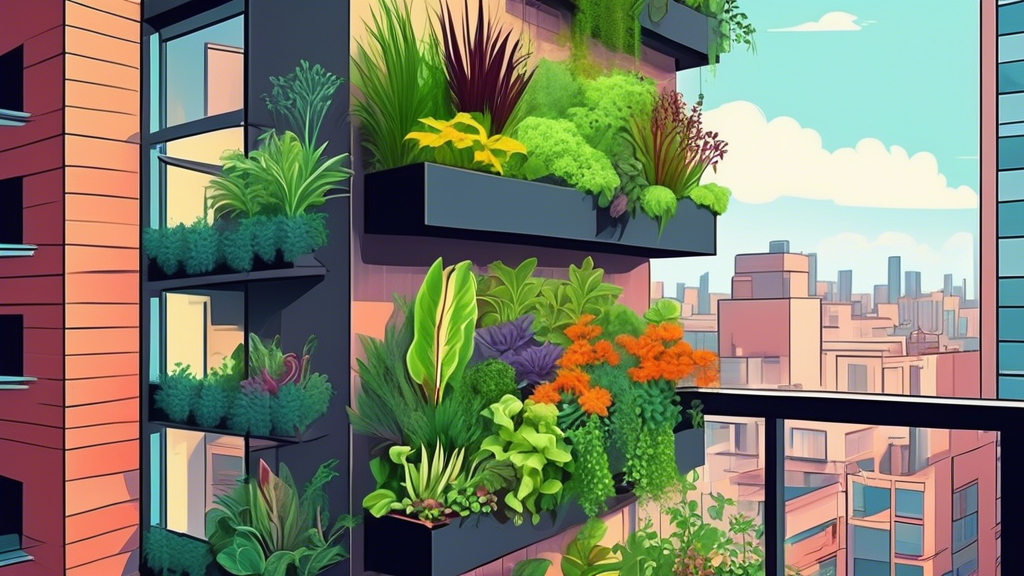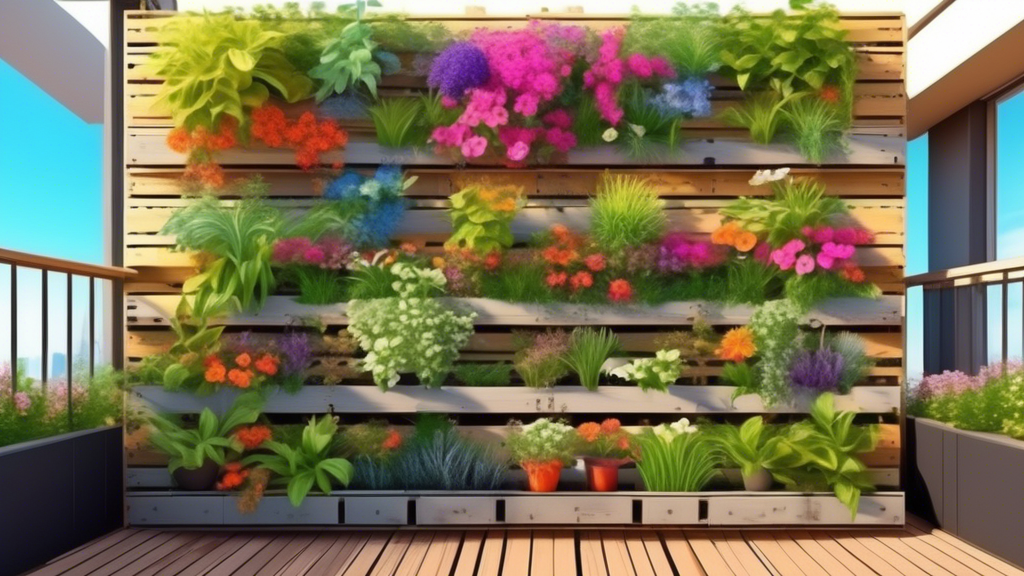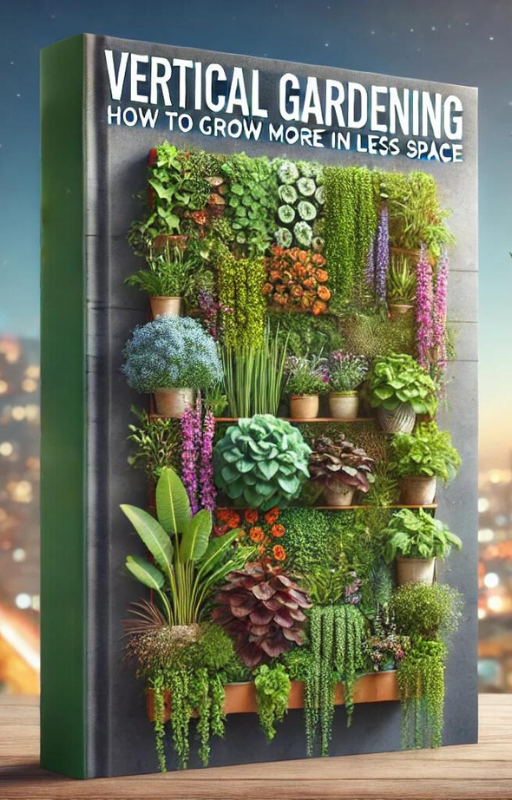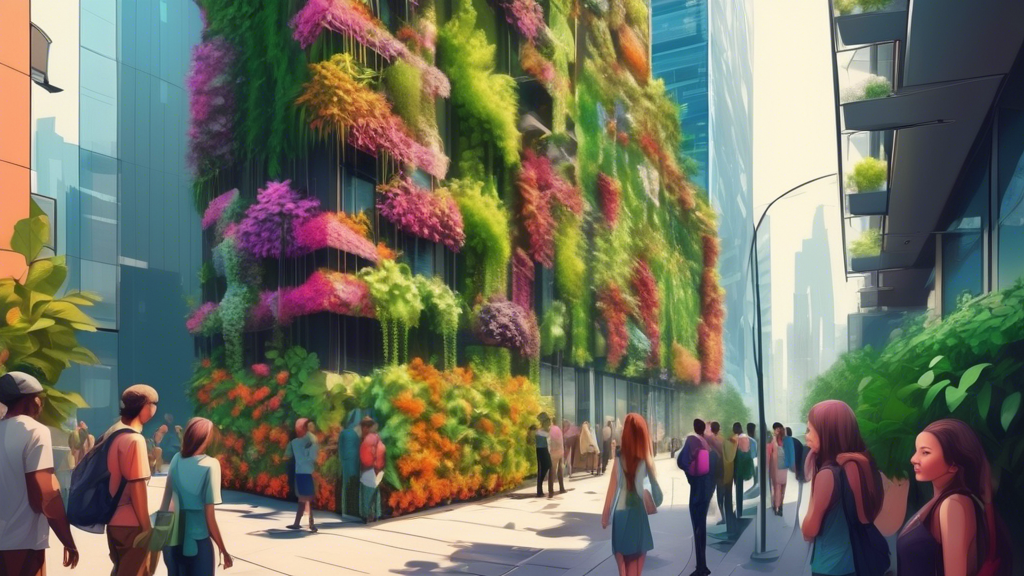
Why Vertical Gardens for Urban Settings Are a Game-Changer
In the heart of the concrete jungle, a green revolution is quietly taking root. Vertical gardens are transforming underutilized urban spaces into lush, productive oases. They are not just a fleeting trend but a practical, innovative solution for city dwellers yearning to reconnect with nature and maximize their limited square footage.
Solving the “No Space” Problem: Maximizing Balconies, Walls, and Patios
The most obvious benefit of a vertical garden is its ability to turn any vertical surface into a potential garden bed. That blank wall on your balcony, the sunny side of your patio, or even a fire escape can become a source of fresh herbs, beautiful flowers, and leafy greens. By growing upwards, you can cultivate the equivalent of a 20-square-foot garden in just a few square feet of floor space.
More Than Just Pretty: The Benefits of Improved Air Quality and Mental Well-being
Plants are natural air purifiers. They absorb pollutants like volatile organic compounds (VOCs) and carbon dioxide while releasing fresh oxygen. In an urban environment, this can significantly improve your immediate air quality. Furthermore, numerous studies have shown that interacting with plants and greenery reduces stress, boosts mood, and enhances cognitive function, making your vertical garden a powerful tool for mental wellness.
A Unique Advantage: How Vertical Gardens Can Naturally Insulate Your Home
Here’s a benefit many don’t consider: a vertical garden can act as a building’s “second skin.” The layer of plants and soil provides additional insulation, shading your walls from the harsh summer sun and providing a buffer against cold winds in the winter. This can lead to lower energy bills as your heating and cooling systems don’t have to work as hard. This phenomenon, known as “bioclimatic architecture,” is a brilliant way to make your urban home more sustainable and efficient.
Getting Started: Your Pre-Planting Checklist
Jumping into a vertical garden without a plan is a recipe for frustration. A little forethought ensures your garden is set up for success from day one.
Assessing Your Space: The Critical Role of Light, Wind, and Water Access
Before you buy a single plant, spend a few days observing your chosen spot.
- Light: How many hours of direct sunlight does it get? Most edible plants need 6+ hours. Note if it’s morning (gentler) or afternoon (harsher) sun.
- Wind: Balconies and rooftops can be wind tunnels. Strong winds can dry out plants quickly and damage delicate stems.
- Water Access: Is there a spigot or hose bib nearby? Carrying watering cans to a hard-to-reach wall gets old fast.
Choosing the Right System: A Comparison of Pocket Panels, Trellises, and Living Walls
Your choice of system depends on your budget, commitment level, and the types of plants you want to grow.
| System Type | Best For | Pros | Cons |
|---|---|---|---|
| Felt Pocket Panels | Herbs, strawberries, leafy greens, annual flowers | Lightweight, easy to install, affordable, great for rentals | Can dry out quickly, may need more frequent watering, less durable |
| Trellises & Obelisks | Climbing vegetables (beans, peas, cucumbers), vining flowers (clematis, morning glory) | Inexpensive, allows you to use standard pots, highly versatile | Requires training plants to climb, takes up some floor space |
| Modular Living Wall Systems | Complex designs, permanent installations, a wide variety of plants | Integrated irrigation, very stable, professional look, long-lasting | Expensive, heavier, more complex installation |
The Secret to a Thriving Garden: It All Starts with the Right Growing Medium
Do not use soil from your backyard or heavy garden soil in a vertical garden. It compacts, holds too much water, and can introduce pests and diseases. The secret is to use a lightweight, soilless potting mix. Look for mixes that contain ingredients like coconut coir, perlite, and vermiculite. These provide excellent aeration and drainage while retaining just enough moisture to keep roots happy without becoming waterlogged.
Essential Tips for a Thriving Vertical Garden
With the foundation set, these essential tips will keep your garden healthy and productive.
Plant Selection is Key: Best Herbs, Leafy Greens, and Flowers for Vertical Growth
Choose plants that are naturally suited for vertical life. They should have shallow root systems and compact or trailing growth habits.
- Herbs: Basil, thyme, oregano, mint (be careful, it’s invasive—best in its own container), chives, parsley.
- Leafy Greens: Lettuce, spinach, kale, arugula, Swiss chard.
- Flowers: Petunias, nasturtiums (edible!), lobelia, begonias, and succulents like Sedum for very sunny, dry spots.
The Irrigation Trick Most Beginners Miss: Setting Up a Simple Drip System
Watering from the top often means the bottom plants get drowned while the top ones stay dry. The most effective method is a simple drip irrigation system with a timer. You can run a main tube from your faucet along the top of your garden, with smaller emitter tubes dripping water directly into the soil of each plant. This delivers water evenly and deeply to the root zone, conserves water, and saves you immense time and effort. It’s the single best upgrade you can make for the long-term health of your garden.
Feeding Your Garden: A Guide to Fertilizing in a Vertical Space
Because you’re using a soilless mix and frequent watering can leach nutrients, regular feeding is crucial. Use a balanced, water-soluble organic fertilizer (look for an N-P-K ratio like 5-5-5 or 10-10-10) and apply it every two weeks. Alternatively, you can use a slow-release granular fertilizer mixed into the potting medium at planting time, which will feed your plants for several months.
Clever Tricks for Urban Vertical Garden Success
Go from a basic gardener to a vertical virtuoso with these clever, cost-effective strategies.
Upcycling for Style and Savings: Using Pallets, Shoe Organizers, and Gutters
You don’t need to buy an expensive kit. Get creative!
- Wooden Pallets: Stand one upright, staple landscape fabric to the back and sides, fill with soil, and plant through the slats.
- Fabric Shoe Organizers: Hang one on a wall or fence, fill each pocket with potting mix, and plant herbs or strawberries. It’s incredibly cheap and effective.
- Vinyl Gutters: Mount them horizontally on a wall to create perfect, shallow beds for lettuce and herbs.
Companion Planting in the Vertical Realm: Natural Pest Control and Growth Boosts
This ancient gardening technique works wonders vertically. Plant certain species together to deter pests and enhance growth.
- Plant basil near your tomatoes to help repel flies and mosquitoes.
- Grow nasturtiums as a “trap crop” to attract aphids away from your more valuable plants.
- Interplant chives or garlic with your greens; their strong scent confuses many common pests.
The Overlooked Factor: How to Protect Your Wall and Manage Water Runoff
A common fear is that a vertical garden will damage the wall. Prevent this by always creating an air gap. Mount your vertical garden system on battens (thin strips of wood) so the back of the planter isn’t pressed directly against the wall surface. This allows for air circulation, preventing moisture buildup and mold. For runoff, place a catchment tray or a stylish trough at the bottom of your garden to collect excess water, which you can then reuse for watering.
Troubleshooting Common Vertical Garden Challenges
Even the best gardens face issues. Here’s how to solve the most common ones.
Dealing with Pests in a Compact Space (Without Harsh Chemicals)
Aphids, spider mites, and whiteflies can quickly overrun a dense vertical garden. Fight back naturally:
- Blast them off: A strong spray of water from a hose can dislodge many soft-bodied pests.
- Neem Oil: This organic pesticide is a safe and effective all-rounder. Mix with water and a little soap and spray on leaves.
- Introduce Beneficial Insects: Order ladybugs or lacewings online and release them into your garden. They are voracious predators of aphids.
Preventing Plant Diseases Caused by Poor Air Circulation
The dense nature of vertical gardens can restrict air movement, leading to fungal diseases like powdery mildew. Ensure you don’t overcrowd your plants. Prune regularly to remove dead or yellowing leaves and to open up the structure. If you see signs of mildew, a spray made from 1 part milk to 9 parts water can be an effective organic treatment.
Seasonal Care: How to Prepare Your Vertical Garden for Winter and Revive it in Spring
For Winter: In cold climates, most annual vertical gardens will die back. Remove dead plants to prevent disease. If you have a permanent system with hardy perennials, ensure the roots are protected from freezing. You can wrap the entire structure in burlap or horticultural fleece.
For Spring: Clean your system thoroughly. Refresh the potting mix in your planters. Test your irrigation system for leaks or clogs. Start with cool-season crops like peas and lettuce, then transition to warm-season plants after the last frost.
Frequently Asked Questions About Vertical Gardens for Urban Settings
How much does it cost to start a vertical garden?
The cost can range from almost nothing to several thousand dollars. A DIY project using an upcycled pallet or shoe organizer might only cost the price of soil and plants ($20-$50). A small, pre-fabricated pocket panel system can be $50-$150. A large, professionally installed living wall with integrated irrigation can cost $1,000+.
What are the best low-maintenance plants for a beginner?
Start with hardy, forgiving plants. Herbs like mint, oregano, and thyme are almost indestructible. For flowers, succulents (like Hen-and-Chicks) and pothos (for shady spots) require very little water and care.
Can I grow vegetables like tomatoes and peppers vertically?
Absolutely! The key is to choose the right varieties. For tomatoes, look for “determinate” (bush) varieties or “dwarf” types that stay compact. For peppers, most smaller chili and bell pepper plants do very well. You will likely need to provide some support, like a small cage or tying the main stem to a trellis.
How often do I really need to water my vertical garden?
There’s no one-size-fits-all answer, as it depends on weather, sun exposure, and your system. Felt pockets in full sun might need water every day in summer, while a modular plastic system in partial shade might only need it every 3-4 days. The best method is the finger test: stick your finger an inch into the soil. If it’s dry, it’s time to water.
Is a vertical garden bad for my wall?
It doesn’t have to be. As mentioned in the “Overlooked Factor” section, the key is prevention. By using a waterproof backing (like a sheet of plastic or pond liner behind your planters) and ensuring an air gap between the system and the wall, you can completely protect your wall from moisture damage. Always check with your landlord if you’re renting.
